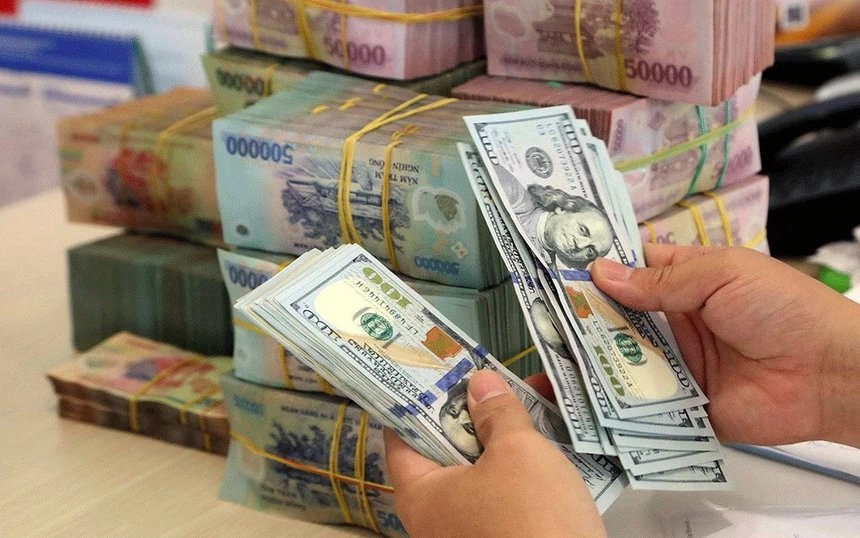Outlook for the USD/VND in 3Q25
MBS expects the exchange rate to fluctuate in the range of 26,000 - 26,400 VND/USD in 3Q25.

The interbank exchange rate hit an all-time high of 26,029 VND/USD on May 29, before ending the month at 26,008 VND/USD
Starting the month at 99.8, the DXY maintained an upward trend and consistently hovered around the 101 level from May 12, driven by positive developments in trade negotiations, including the US-UK trade agreement and a US-China agreement to slash 15% tariffs on each other's goods for 90 days.
However, downward pressure on the greenback reemerged after May 19 amid a string of pessimistic economic news: Moody’s downgraded the US credit rating by one notch to Aa1 due to the growing burden of the government’s budget deficit; US GDP shrank by 0.2% in Q1, confirming the first contraction since 2022; consumer spending only inched up by 0.2% as households opted to boost savings amid mounting economic uncertainties; and US manufacturing contracted for the third consecutive month, with the ISM PMI posting 48.5 in May.
Additionally, economic jitters intensified near the end of the month as President Trump escalated his trade war by proposing a 50% tariff on EU goods, threatening Apple with a 25% duty on iPhones manufactured outside the US, and raising tariffs on steel and aluminum to 50%. Consequently, the DXY dropped to a one-month low of 98.9 on May 26.
Amid this volatile context, the Federal Reserve left its benchmark interest rate unchanged at its May meeting. By month-end, the dollar rebounded slightly to 99.5 (-9.1% compared to the beginning of the year) thanks to reduced trade tensions after Trump backed off his threat against the EU, restoring a July 9 deadline.
The recovery of the USD in May has increased downward pressures on the VND. Additionally, on the domestic front, pressures largely stemmed from high USD demand. In May, the State Treasury announced plans to purchase US dollars from commercial banks, with a maximum total value of USD 250mn, thereby raising the total USD purchased since the beginning of the year to nearly USD 1.6bn, tightening the USD supply.
Furthermore, as May is a peak import period, the demand for foreign currency also surged. As a result, the interbank exchange rate hit an all-time high of 26,029 VND/USD on May 29, before ending the month at 26,008 VND/USD (2.2% compared to early 2025). Meanwhile, the freemarket rate climbed to 26,310 VND/USD, while the central rate stood at 24,978 VND/USD, marking increases of 2.2% and 2.6%, respectively, from the start of the year.
MBS expects the exchange rate to fluctuate in the range of 26,000 - 26,400 VND/USD in 3Q25, representing a year-to-date increase of 2.1% - 4.1%, amid various headwinds in the coming period.
First, the USD is expected to maintain its strength, supported by high U.S. protectionism and elevated interest rates, as the Federal Reserve is projected to cut interest rates only twice this year.
Second, MBS believes that tariff risks will also be a significant factor affecting the USD/VND exchange rate this year. If high retaliatory tariffs persist, they will pose significant challenges for Vietnam’s exports and FDI attraction, further tightening the foreign currency supply and exerting pressure on the exchange rate.
According to the latest data from the GSO, in the first five months of 2025, the trade balance of goods recorded a surplus of approximately US$4.67bn, while disbursed FDI amounted to US$8.9bn (7.9% yoy). However, if both countries successfully negotiated to reduce tariffs, it would significantly contribute to stabilizing the exchange rate, interest rates, and strengthening key economic activities such as exports and FDI attraction.








